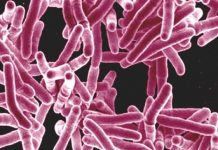Audentes Therapeutics is trying to show Sarepta isn’t the only game in town when it comes to DMD. The collaboration with Nationwide’s Children Hospital in Columbus, Ohio, centers on an approach that aims to stimulate a more complete version of dystrophin, a muscle-repair protein missing in DMD patients thanks to faulty genes.
Numerous mutations can cause DMD, which causes boys to lose the ability to walk during childhood and leads to further disability as the disease progresses. The only disease-modifying drug on the market is Sarepta’s Exondys 51, which “skips” faulty exon 51 in the dystrophin gene to allow for production of a shortened version of dystrophin.
Yet the drug, which was controversially approved in 2016, is only suitable for the 13% of DMD patients with this particular mutation.
Gene therapies being developed by Sarepta, Solid Biosciences and Pfizer could be used more broadly in patients. There’s a catch, though: the dystrophin gene is too large to deliver to cells using the adeno-associated virus (AAV) vectors often used in gene therapy. So these companies have used a shortened form that stimulates a truncated form of dystrophin.
Enter Nationwide Children’s Hospital’s Kevin Flanigan, who has combined AAV delivery and exon-skipping technologies. The $7 million paid up front to the hospital hands Audentes AT702, which treats patients with a duplication of exon 2 in the dystrophin gene. This represents only 2% of patients, although Audentes said AT702 could also be effective in an additional 4% of patients who have mutations in exons 1 through 5.
AT702 has yet to be tested in humans. Flanigan has submitted an application to the Food and Drug Administration for permission to begin clinical trials, but the regulators have asked for additional toxicology data. Audentes executives said human trials should begin at the end of 2019.
Separately from the Nationwide collaboration, Audentes announced that it is advancing two other pre-clinical DMD candidates using the same technology combining gene delivery and exon skipping, although it did not disclose its collaborator on these agents. These are AT751 and AT753, which target the same mutations as Sarepta’s Exondys 51 and golodirsen.
While Sarepta has a huge lead in DMD, especially in the populations with exons 51 and 53 mutations, it should take seriously the threat from Audentes.
The argument against approval of Exondys 51 centered on its weak effect on dystrophin production and almost negligible improvement in physical function. That profile makes a ripe target for follow-on drugs with a more robust patient response, as Audentes believes it can do.








